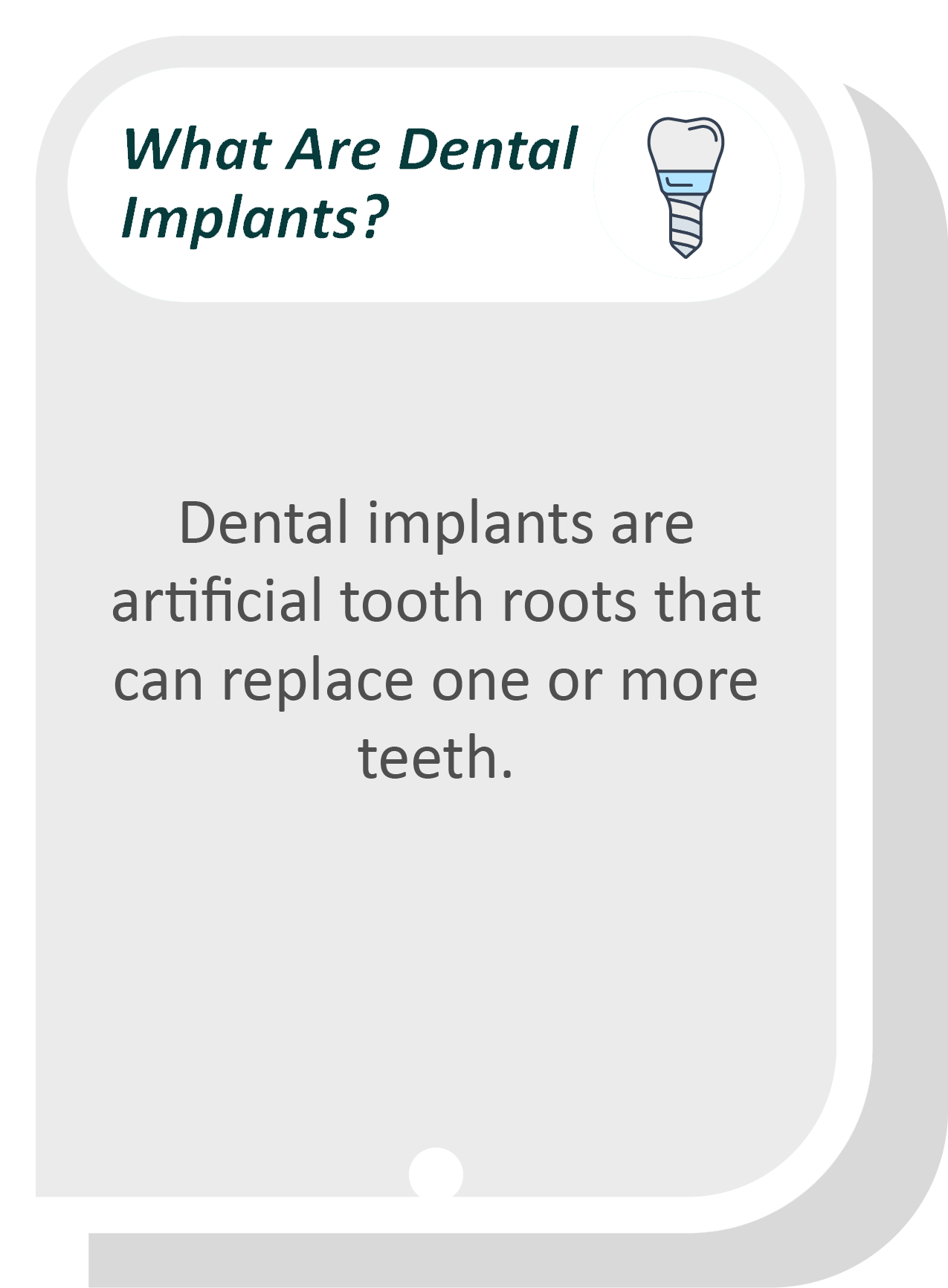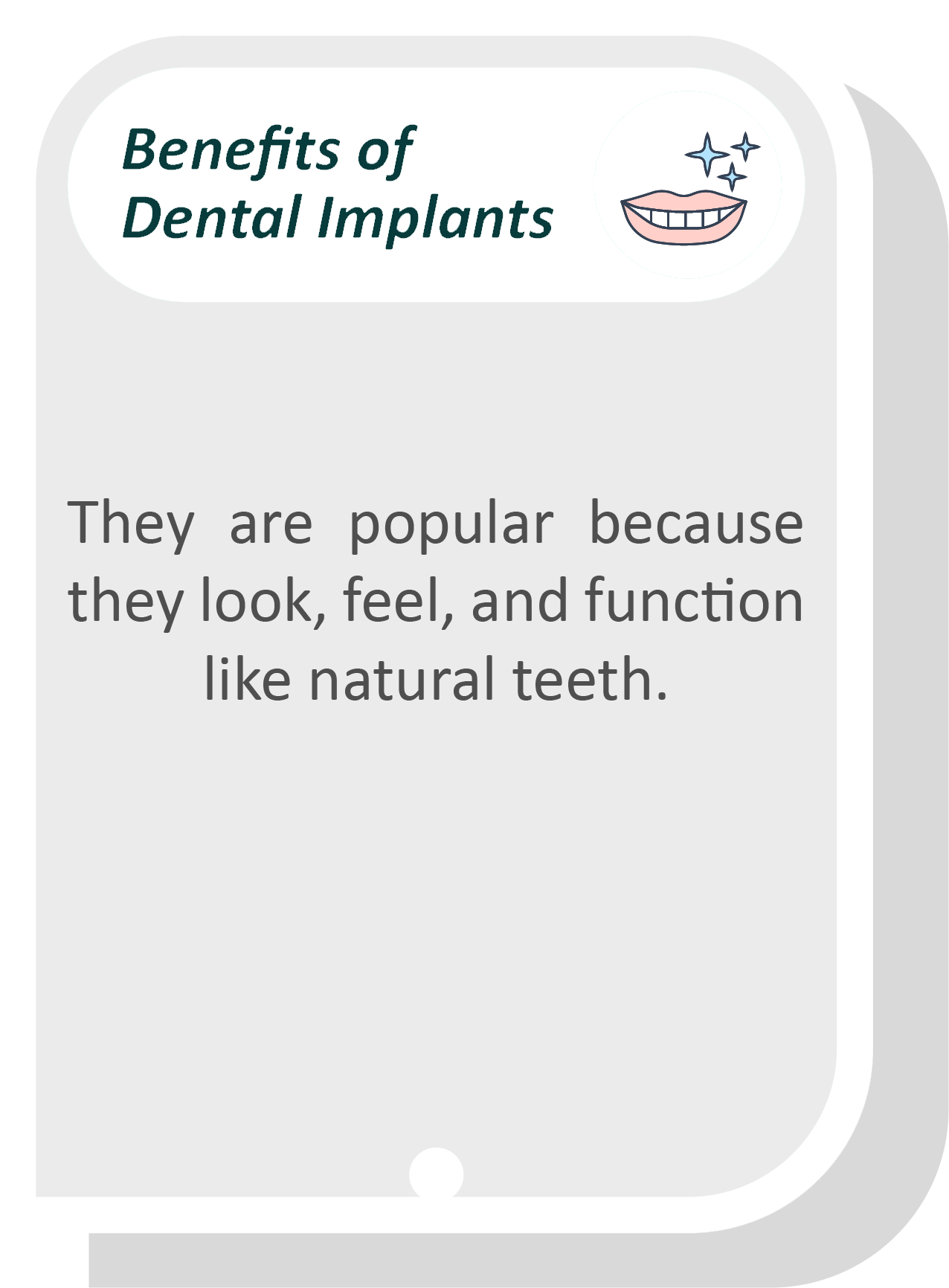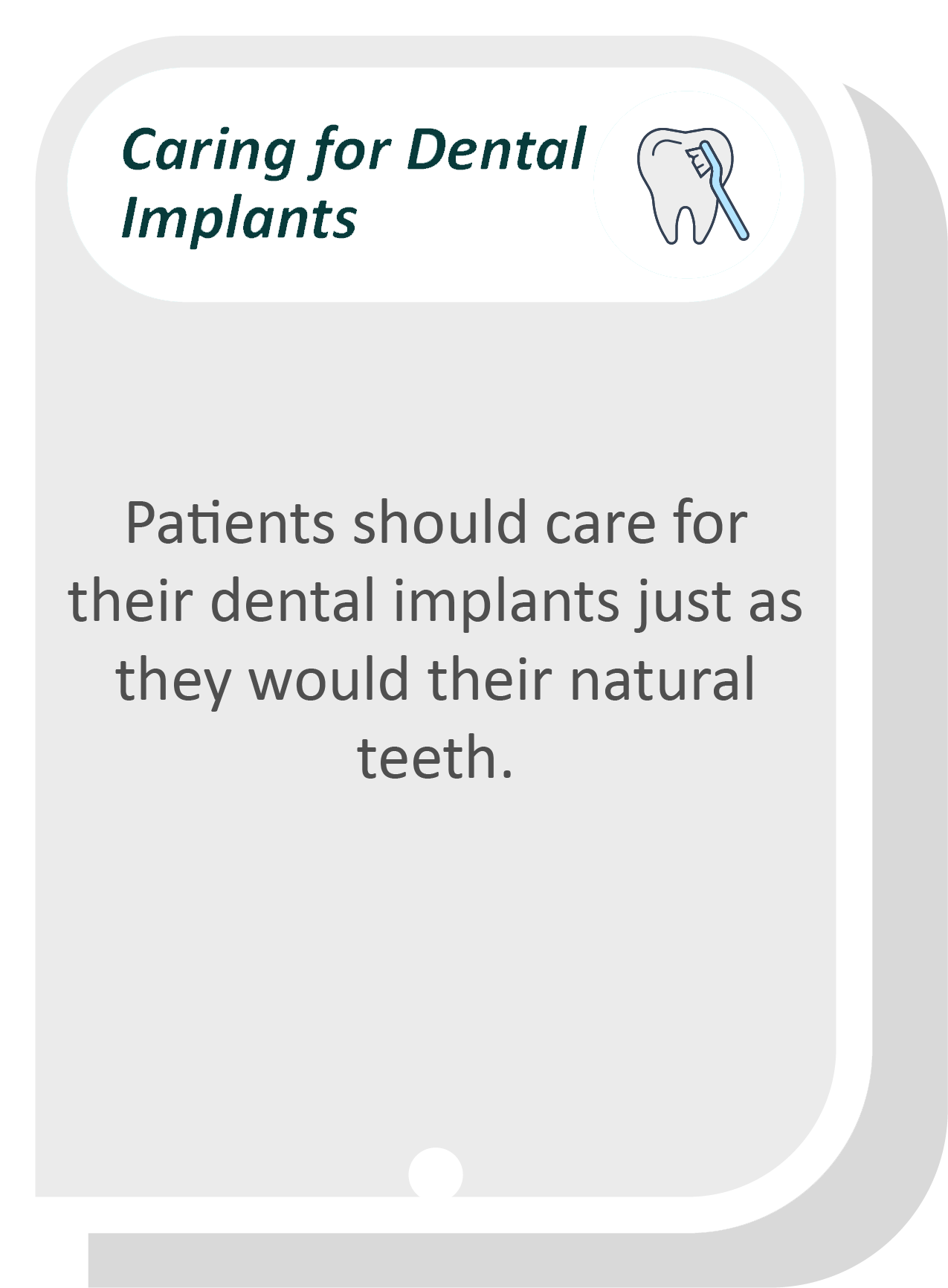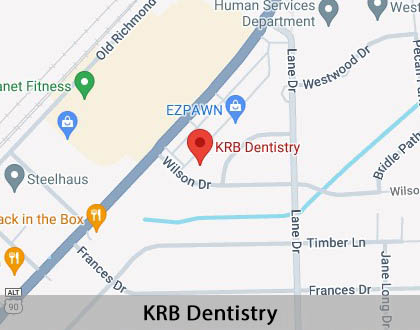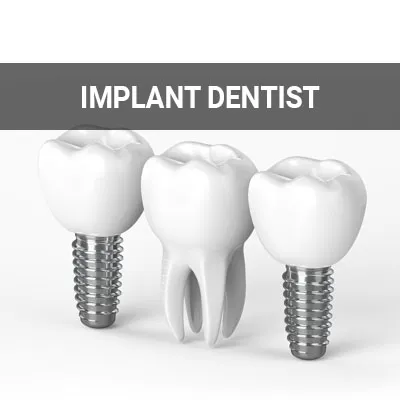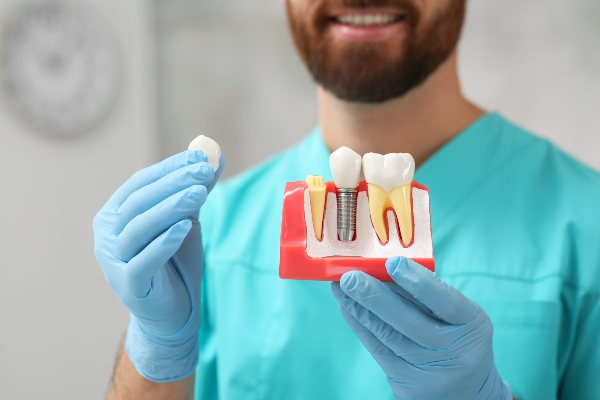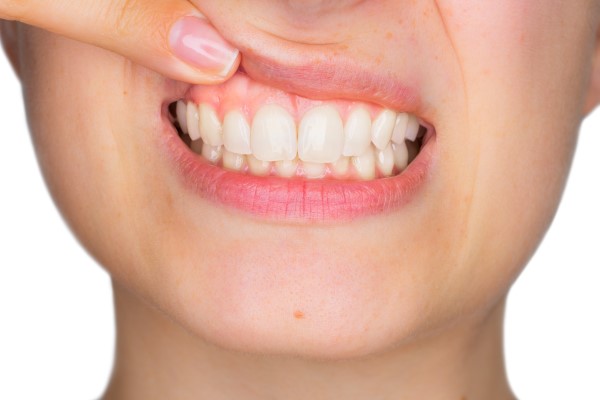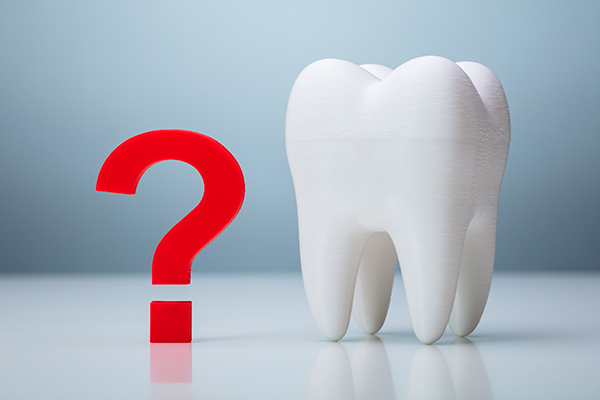Dental Implants Rosenberg, TX
Patients can enjoy a more comfortable and functional bite after losing teeth with dental implants. Implants act as artificial roots to anchor permanent teeth replacements. If you are missing one or more teeth or need to have one extracted, dental replacements can be a great option to restore your smile.
Dental implants can be beneficial for people who want a tooth replacement option that closely imitates natural teeth. They can be a very effective long-term solution for missing teeth. Dental implants are available at KRB Dentistry in Rosenberg and the surrounding area. Call our team at (832) 361-3929 to learn more about this service and set up an appointment.
The Dental Implant Process
Dental implants act as artificial tooth roots to support new replacement teeth. During the procedure, an incision is made in the patient's gum to expose the bone where the implant will be placed. We will then insert the implant and suture the gum around the implant post. In some cases, a temporary denture is used instead of replacement teeth.
Following the surgery, the bone needs to heal around the dental implant. This process can take several weeks or months. Once it is sufficiently strong, a dentist can fit the permanent replacement teeth. According to the Mayo Clinic, some extra steps may be necessary. For patients with weak jawbones, a bone graft may be needed to ensure sufficient strength. After the bone has healed, an abutment connects a crown or dentures to the dental implant.
“Dental implants act as artificial tooth roots to support new replacement teeth.”
How To Care for Dental Implants
Caring for dental implants is very similar to caring for natural teeth, especially if the replacement teeth are permanent. Brushing, flossing, and rinsing with mouthwash is necessary for maintaining proper oral hygiene with implants. Getting regular checkups and teeth cleanings at the dentist are important for taking care of replacement teeth.
Dental implants may require extra cleaning to keep them in optimal condition. Removable, implant-supported dentures should be taken out at night and soaked in a denture solution. Patients can also use an oral irrigator to help clean below and around the dental implants.
“Caring for dental implants is very similar to caring for natural teeth, especially if the replacement teeth are permanent.”
What To Expect After the Dental Implant Procedure
It is normal to experience some soreness and swelling at the implant site following the procedure. We recommend patients apply an ice pack for the next couple of days to reduce swelling. Patients can manage pain with a prescription or over-the-counter painkillers and may also receive antibiotics to prevent postoperative infections. Patients who experience swelling or significant pain that persists for more than a few days after the surgery should contact their dentists.
While the site heals, patients should eat soft foods and avoid chewing on the implant. Dentists often use self-dissolving stitches that usually fall out in seven to 10 days. In some cases, when non-dissolving sutures are required, another appointment is needed to remove them in 10 to 14 days. Following post-care instructions will aid the healing process.
“Following post-care instructions will aid the healing process.”
Check out what others are saying about our dental services on Yelp: Dental Implants in Rosenberg, TX
Benefits of Dental Implants
An article in the Journal of Dental Research has noted the growing prevalence of dental implants between 1999 and 2016 and projects increasing predominance for the future. Several reasons contribute to the increasing popularity of implants for patients who need to replace teeth. They provide a wide range of benefits, including:
- Bone loss reduction: The loss of a tooth usually causes bone loss in the jaw, destabilizing the remaining natural teeth. If left alone, the jawline can shrink over time and lose overall density, causing more issues. Implants stimulate new bone cell growth and help maintain jaw structure stability.
- Natural feel: Dental implants feel natural and comfortable in the mouth. They are permanent, so there is no need to worry about them popping out while eating or speaking. Since they function similarly to natural teeth, dental implants exert similar pressure against the jawbone to keep it healthy and functional.
- No special maintenance: Patients can care for their dental implants similarly to caring for their natural teeth. Brushing and flossing can remain the same, but patients should floss more cautiously when running it against the gumline. Patients can benefit from following a routine similar to caring for natural teeth rather than adapting to a brand-new regimen.
“Several reasons contribute to the increasing popularity of implants for patients who need to replace teeth.”
Questions Answered on This Page
Q. What happens during the dental implant process?
Q. How to take care of dental implants?
Q. What happens after the dental implant procedure?
Q. What are the benefits of dental implants?
People Also Ask
Q. How long does it take to place a dental implant?
Q. Why are dental implants a great restorative option for most people?
Frequently Asked Questions
Q. How long does it take to insert dental implants?
A. The entire process, from initial consultation to the end, can take several months. The dental implant procedure usually takes an hour or less. This process can take longer, depending on the location of the site and the number of implants.
Q. What should I do if the dental implant gets chipped or cracked?
A. Typically, the crown attached to the implant can become damaged. A dentist can replace the crown. Patients should make an appointment with their implant dentist as soon as possible.
Q. Can I get implants if I have full or partial dentures?
A. Implants can serve as a base to attach permanent or removable dentures. Patients needing full or partial teeth replacements often find implant-anchored bridges more comfortable than other options. Implants can provide patients with additional stability and comfort.
Q. Is it likely I will have an allergic reaction to the materials in the implants?
A. Implant posts usually consist of a titanium alloy. A 2019 study found that titanium allergies are less common than other metal allergies. If patients have any concerns, they may have allergy testing done before getting implants.
Q. How soon can I return to work after getting dental implants?
A. Most people can resume normal functioning the next day. Some common side effects include gum and skin bruising, facial and gum swelling, and minor bleeding and pain. Dental professionals also recommend avoiding heavy lifting for 48 hours after the procedure.
Dental Implant Terminology
Call Us To Learn More About Dental Implants
Dental implants closely imitate the form and function of natural teeth. If you are missing teeth, this may be the solution for you. Call (832) 361-3929 to set up an appointment at KRB Dentistry and learn more about this procedure.
Helpful Related Links
- American Dental Association (ADA). Glossary of Dental Clinical Terms. 2024
- American Academy of Cosmetic Dentistry® (AACD). Home Page. 2024
- WebMD. WebMD’s Oral Care Guide. 2024
About our business, license, and website security
- KRB Dentistry was established in 2014.
- We accept the following payment methods: American Express, Cash, Discover, MasterCard, and Visa
- We serve patients from the following counties: Fort Bend County
- We serve patients from the following cities: Rosenberg, Richmond, Cumings, Pecan Grove, and Pleak
- TX (License #19523). View License Information and Specifics
- National Provider Identifier Database (1124126479). View NPI Registry Information
- Healthgrades. View Background Information and Reviews
- Norton Safe Web. View Details
- Trend Micro Site Safety Center. View Details
Back to top of Dental Implants

